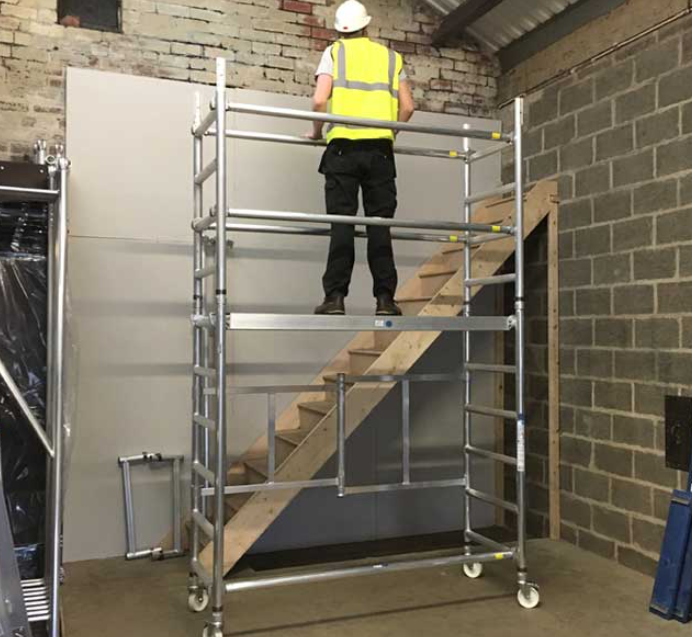Organizations operating across multiple locations must maintain consistency, safety, and efficiency in the business environment in every project. Whether it is a retail chain performing maintenance, a university overseeing facility upgrades, or a contractor managing several job sites, the equipment chosen can make or break productivity. This blog explores why aluminum Indoor Scaffolding is the smart upgrade for multi-site operations. From its lightweight versatility to its durability and safety features, we will look at how modern scaffolding systems streamline work, reduce costs, and maximize value across diverse environments.
Lightweight Mobility for Multiple Sites
Aluminum Indoor Scaffolding is designed to be lightweight yet strong, making it easy to move between locations. This portability is a significant advantage for businesses transporting scaffolding across towns or campuses. Units can be folded, rolled onto trucks, and quickly set up at a new site. Unlike heavy steel models that require more labor and equipment, aluminum scaffolding allows teams to transition seamlessly from one project to another. For multi-site operations, mobility is convenient and a direct cost saver.
Protection for Sensitive Flooring
Many multi-site projects take place indoors, where flooring must be preserved. Aluminum Indoor Scaffolding is engineered with smooth casters and lightweight frames that distribute weight evenly, protecting surfaces such as tile, hardwood, or polished concrete. At the same time, these towers are sturdy enough for outdoor use when projects require flexibility. This dual capability means one scaffold system can serve different environments, eliminating the need to purchase or store separate equipment for indoor and outdoor tasks.
Variety of Heights and Configurations
Not every location has the exact requirements, which is why variety matters. Aluminum Indoor Scaffolding comes in multiple sizes and styles, ranging from compact six-foot baker units to expansive 21-foot towers. Scaffold USA’s selection includes single-wide and double-wide options, along with folding bases and rolling towers. This range ensures that organizations can match the right scaffold to the specific challenges of each job site. Whether changing lighting in a school auditorium or repairing ceilings in a warehouse, there is a configuration that fits.
Faster Assembly and Setup
Time is money in multi-site operations, and equipment that takes too long to assemble can slow down projects. Aluminum Indoor Scaffolding is built for efficiency, with folding frames, trapdoor platforms, and quick locking systems that allow teams to set up in minutes. Faster assembly means more work completed in a single day and fewer delays between tasks. For organizations balancing multiple locations and tight schedules, this time savings is a critical benefit that improves overall project performance.
Long Term Durability
Longevity is key when investing in equipment for multi-site use. Aluminum Indoor Scaffolding offers excellent resistance to rust and corrosion, ensuring it performs reliably even when exposed to varied conditions. Unlike some materials that degrade quickly, aluminum maintains its structural strength year after year. This durability reduces replacement costs and ensures the same scaffolding can be deployed across different sites without compromising safety or reliability. Over time, this resilience creates a strong return on investment for organizations.
Safety Features That Protect Teams
Safety is always a priority, particularly when crews rotate across different sites. Aluminum Indoor Scaffolding incorporates locking pins, toe boards, and trapdoor platforms to ensure stability. These design elements minimize risks of slips or falls and create a secure working environment. With consistent safety features across all units, teams can quickly adapt and work with confidence, no matter where they are deployed. A safer team is also a more productive, reducing downtime caused by accidents.
Standardization Across Operations
Consistency is essential for organizations managing multiple facilities. Standardizing equipment such as aluminum Indoor Scaffolding helps crews maintain familiarity and efficiency, regardless of location. When workers use the same type of scaffold across sites, training requirements decrease, and productivity increases. Standardization simplifies purchasing and maintenance since managers can stock the same replacement parts and accessories across all sites. This uniformity strengthens operational control and eliminates unnecessary complexity.
Cost Efficiency and Value
Every decision in multi-site operations comes down to value. Aluminum Indoor Scaffolding combines affordability with performance by reducing labor costs, protecting flooring, and speeding up project completion. Its long-lasting durability means fewer replacements, while its mobility ensures that one investment serves many locations. These benefits deliver measurable savings and help organizations maximize their budgets while maintaining high-quality standards.
Conclusion
Aluminum Indoor Scaffolding is the smart upgrade for organizations running multi-site operations. Its lightweight design allows easy transport, while its gentle casters protect sensitive flooring without sacrificing strength. The wide variety of heights and configurations ensures a solution for every project, from minor maintenance tasks to large-scale facility upgrades. With quick assembly, built-in safety features, and long-term durability, aluminum scaffolding delivers reliability across multiple locations. Organizations can simplify logistics, improve efficiency, and protect their teams by standardizing on this equipment. Ultimately, aluminum indoor scaffolding is not just a tool but a strategic investment that enhances productivity, reduces costs, and supports growth across every site.



